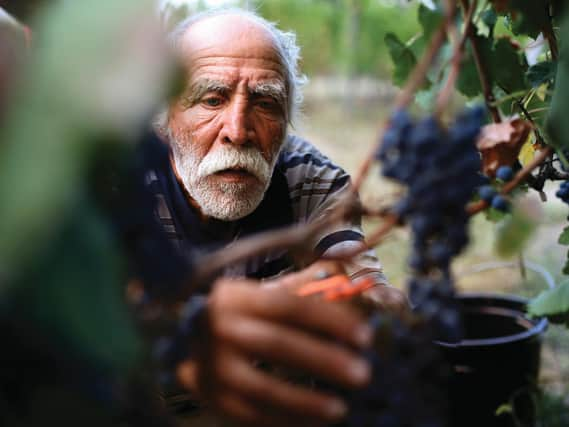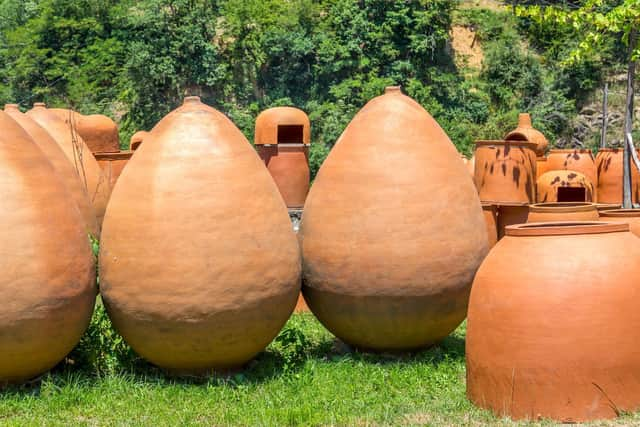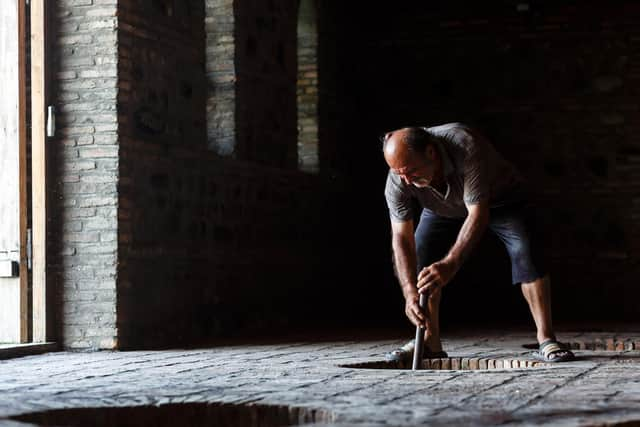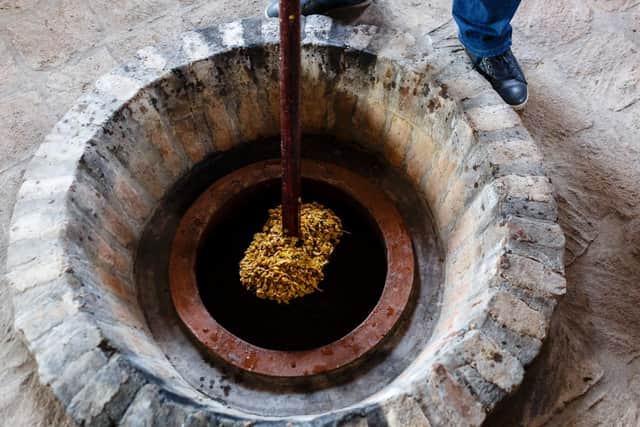Georgia: The country known as the ‘cradle of wine’ was shut off from the rest of the world for decades


Georgia's enigmatic charms are fascinating; and its wines are delicious.
I found out more when I spoke to Master of Wine Sarah Abbott on a ‘press trip’ to Georgia.
Advertisement
Hide AdAdvertisement
Hide AdWell, kind of. Picture me at home, in front of a laptop screen, on a bleak autumnal English morning, and there you have it.


But wow: What a joy to taste wines (and some cheeses too) from this fascinating place and talk to enthusiastic winemakers.
Georgia was on the ancient trade route and has a rich history.
The Black Sea is to the west, the Caspian Sea to the east, and its northern border is fringed by Russia. To the south is Turkey, Armenia and Azerbaijan.
Georgia is 70 per cent covered by mountains.


Advertisement
Hide AdAdvertisement
Hide AdThat means wine styles are influenced by different climates, soils, weather and temperatures.
Sarah Abbott says: “If you love wine, it’s a really compelling place. Because it’s in their blood.
"Wine has a cultural and very unforced resonance. It’s really unique and really powerful.”
Sarah fell in love with the wines of Georgia at a time when it was emerging on to the world stage when the Iron Curtain crumbled.


Advertisement
Hide AdAdvertisement
Hide AdShe says: “It has an incredible history and an incredible richness of native varieties. It has so many micro terroirs.
“But for so many years it was shut off from us because Georgia was the main producer of the Soviet Union.
“It was really hemmed in and straitjacketed into producing a certain type of wine for high consumption.”
The native creativity and individualism, which are part of the Georgian character, wasn’t part of the process.
Advertisement
Hide AdAdvertisement
Hide AdThe skills of thousands of years of tradition were neglected to meet the vinous needs of the Soviets.
Russia is still Georgia’s biggest market, but now the Georgians are reclaiming their signature culture. And that’s wonderful to know.
Older vineyards and terraces are being rebuilt and replanted. Now the emphasis is on quality, not quantity.
Native grapes are being rediscovered. There are 525 of them and about 30 are in use commercially.
Advertisement
Hide AdAdvertisement
Hide AdSays Sarah: “It’s a treasure trove of amazing indigenous varieties.
“For me, that’s the great joy of Georgia.”
Look out for saparavi (red) which produces full-bodied wines with natural acidity; and white rkatsiteli, which has aging potential.
So why is Georgia ‘the cadle of wine?’
Wine history springs from the Neolithic period. Grape pips were discovered, showing, ‘the relationship between man and grapes started as early as the sixth millennium BC and the first cultivated vine was encountered in Georgia’.
Ancient qvervi vessels dating from the neolithic era, were discovered in archaeology digs in Georgia, together with cultivated vine fossil seeds and sediment in earthenware vessels.
Advertisement
Hide AdAdvertisement
Hide AdQvervi were the first vessels ever used in winemaking thousands of years ago; and are still in use today.
Producers bury the qvervi in soil in wine cellars (marani). Grapes can ferment there for around six months, and many wines age in them too.
Qvervi are, says Sarah, “the thing Georgians are most proud of. They are used for artisanal wines and its a very close relationship between the winemaker and the wine being made”.
You can find a wealth of information at the website www.georgianwine.uk which also gives a list of where to buy wines from Georgia.
Advertisement
Hide AdAdvertisement
Hide AdA good selection can be found at Lancashire’s Turton Wines (www.turtonwines.co.uk)
Jane Clare of One Foot in the Grapes, is a programme provider for the Wine & Spirit Education Trust.
Go to www.onefootinthegrapes.co.uk for details.
Comment Guidelines
National World encourages reader discussion on our stories. User feedback, insights and back-and-forth exchanges add a rich layer of context to reporting. Please review our Community Guidelines before commenting.
